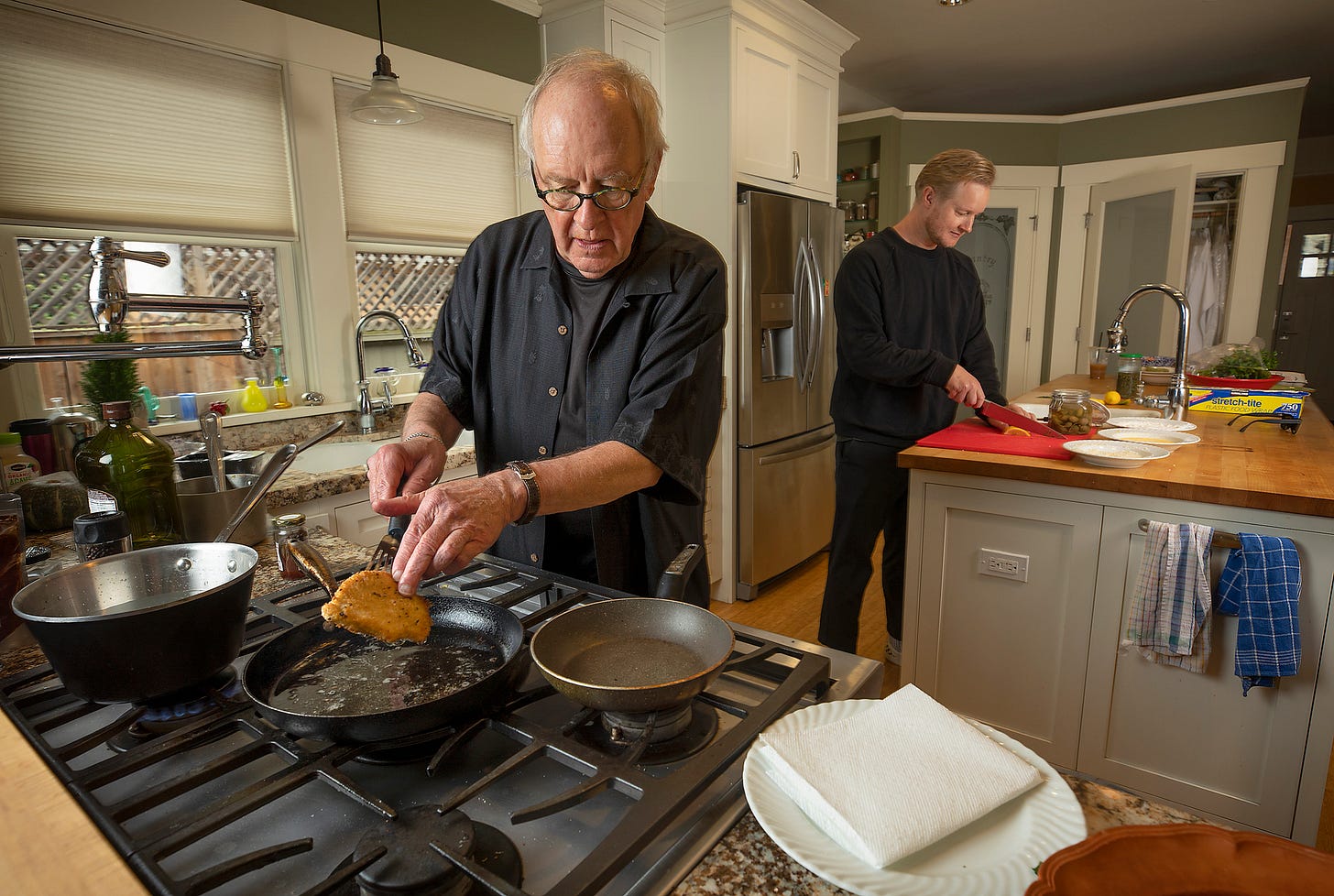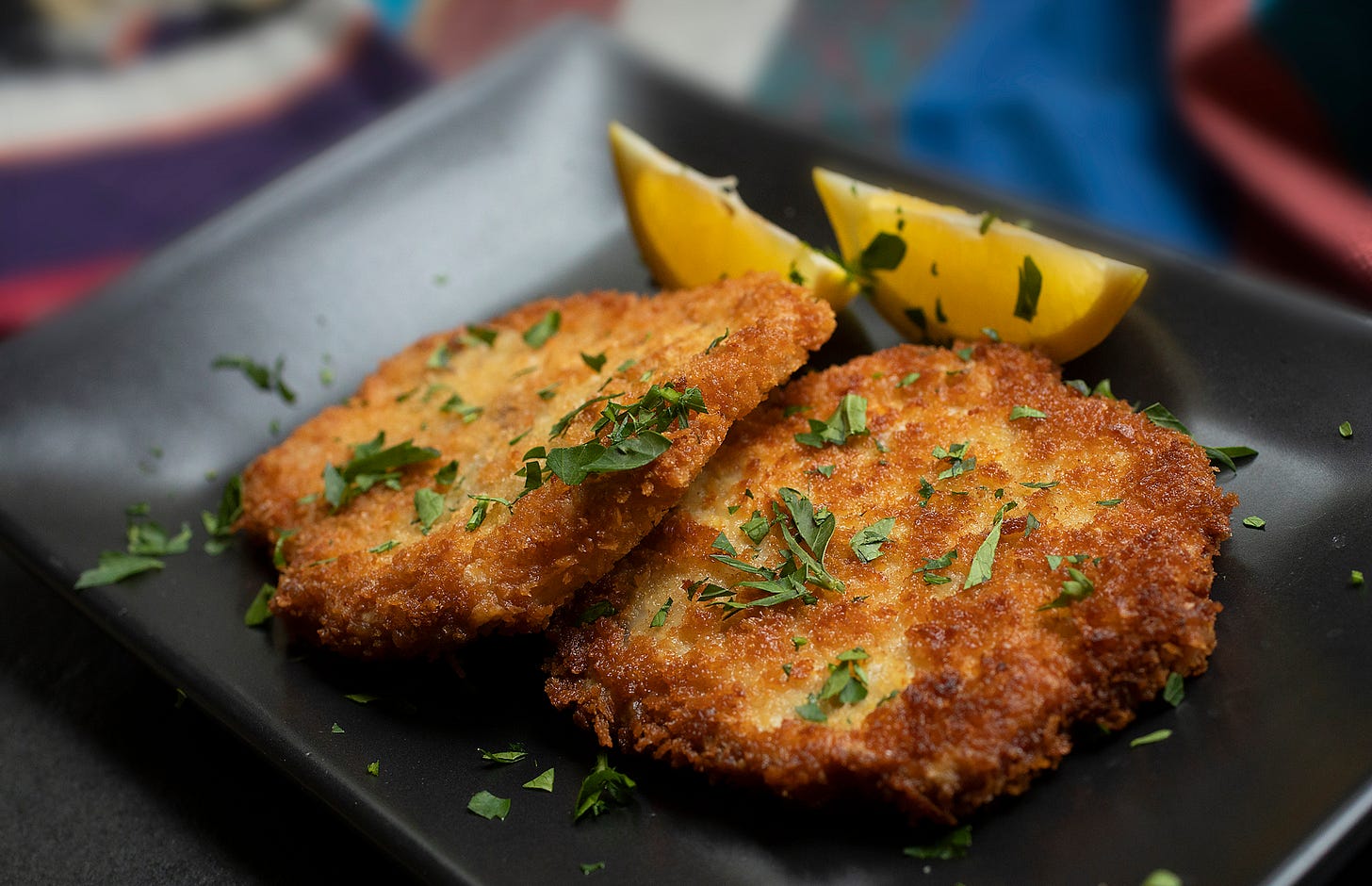Schnitzel holds a very special place in my heart (and stomach). My Grandmother used to make it often and she was the master of schnitzels of all kinds. It was such a favorite that used to call me her “little schnitzel” which I think (I hope) talked to how special this preparation (and of course me) was. If you like fried chicken, schnitzel is for you.
Schnitzel is a German-Austrian term which translates roughly to “slice” or “shave” according to the Oxford Dictionary. It’s described as a slice or “scallop” of veal or other light meat that is pounded then dusted with flour, egg and bread crumbs and fried. Not a particularly evocative description but most would agree it’s damned delicious and easy to do.
In Germany there are many variations that you’ll find in restaurants and homes:
Wiener-Schnitzel usually made with veal. The “Wiener” designation refers to its supposed origin in Vienna in Austria (tho’ there is some dispute about this).
Schweine-Schnitzel made with pork or pork tenderloin
Puten-Schitzel made from turkey breast
Hänchen-Schnitzel made from boneless, skinless chicken breasts or thighs
In addition to different types of meat a schnitzel can also be served with a topping or filling. Here are some of the more traditional combinations:
Jager-Schnitzel: Veal or pork schnitzel topped with a mushroom sauce
Zigeuner-Schnitzel: Topped with a “gypsy sauce” of paprika/bell peppers/onions
Käse -Schnitzel: Any of the meat schnitzels topped with melted cheese
Schnitzel Holstein: Topped with fried egg, onions and capers (specialty of Berlin)
Cordon-Bleu: From Switzerland, schnitzel stuffed with ham and Gruyere
The schnitzel approach is not uniquely German. I find recipe similarities fascinating as they morph and move around the world. Other cuisines have their own variations on the theme such as:
• Scallopini, Picatta or Milanese in Italy
• Tonkatsu in Japan
• Chicken Fried Steak in the American Southwest
The method is straight-forward:
The meat is gently pounded between sheets of plastic wrap. This is done to achieve an even thickness (usually 1/4 inch or so) for even cooking and to tenderize the meat. Use the flat side of your meat pounder to avoid tearing. If you don’t have a meat pounder, a rolling pin or even a heavy bottomed sauce pan works just fine.
MY GRANDMOTHER’S SIMPLE SCHNITZEL
Serves 4
4 veal or other white meat cutlets such as chicken, pork or turkey (4 to 6 ounces each)
Salt and freshly ground pepper
1/2 cup or so flour
1 large egg, beaten with 1 tablespoon water
1/2 teaspoon Dijon style mustard (optional)
1 cup or so bread crumbs
3 tablespoons butter
3 tablespoons vegetable oil
1 small lemon cut into wedges
Chopped parsley or chives
Trim any fat from meat and clip edges to stop meat from curling during cooking. Season the cutlets with salt and pepper. Coat schnitzel using the 3-step method.
Heat butter and oil over medium heat in skillet, preferably non-stick. The reason we use both butter and oil is that the oil gives the butter a little insurance policy against burning. There should be enough fat in the pan for the schnitzel to “swim”. Sauté the cutlets, in batches if necessary, until golden brown about 3 minutes per side. Drain on paper towels and serve immediately, garnished with lemon wedges to squeeze over and chopped parsley sprinkled over.
How To Make Schnitzel and More Recipes
Keep reading with a 7-day free trial
Subscribe to In the Kitchen with Chef John Ash to keep reading this post and get 7 days of free access to the full post archives.



